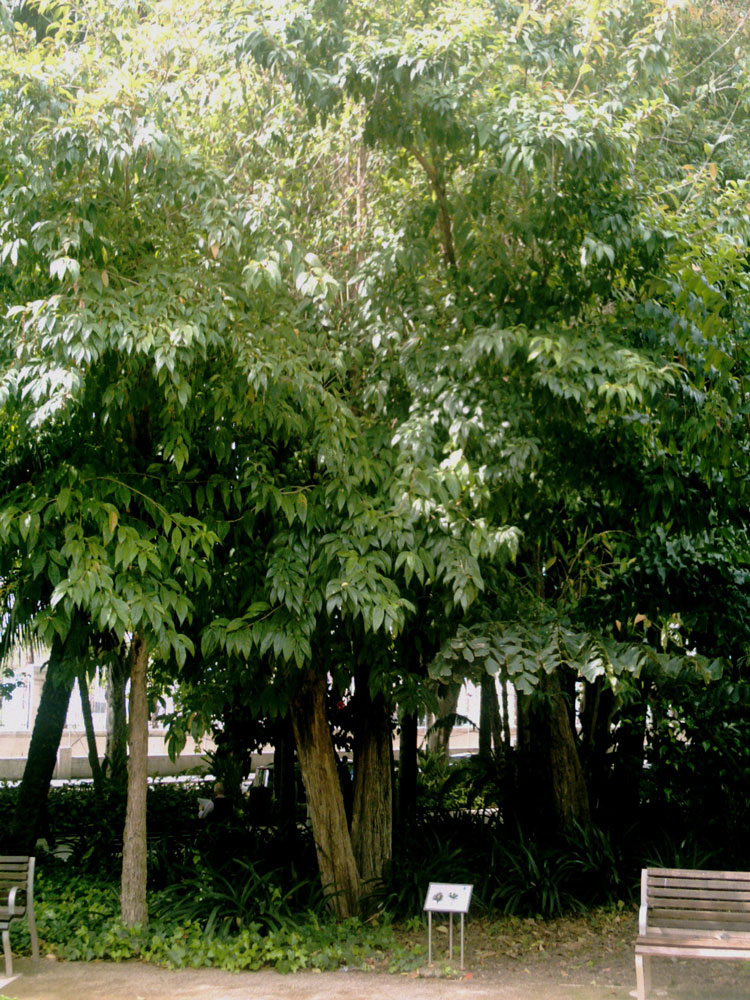Manjari - Fiddle Wood Tree

Citharexylum spinosum
Summary
Scientific Classification
Kingdom: Plantae
Division: Magnoliophyta
Class: Magnoliopsida
Order: Lamiales
Family: Verbinaceae
Genus: Citharexylum
Species: C.spinosum
Scientific Name: Citharexylum spinosum L.
Common Names:
English name: Fiddle woodspiny fiddle.
Hindi name: Manjari.
Kanda name: Beli parijatha.
Description:
Habit and habitat: It is a tree that reaches a height of up to 15 m (49 ft). Commonly grown as garden / avenue tree.
Distribution: Native of West Indies; induced and naturalised in many other countries.
Morphology:
Leaf: leaves are up to 8 inches long, smooth and oval or oblong. The leaves also narrow at the base to a short stem, are coarse-toothed or entire, pointed at the tip, and are opposite or in groups of three.
Flower: flowers numerous, small, regular or somewhat zygomorphic; bractlets inconspicuous. Calyx cupular or tubular, 5-lobed or 5-toothed to truncate. Corolla white, 0.8-1 cm across, infundibular or hypocrateriform, usually 5-lobed, rarely 4- or 6-lobed, lobes slightly irregular; tube narrow, cylindric.
Inflorescence: Inflorescence axillary and terminal, recemiform or spicate, simple or branched, erect or droopin.
Fruit: Fruit a drupe, partly enclosed by the enlarged calyx; pyrenes 2-loculed and 2 -seeded.
Flowering & Fruiting: April-September.
Propagation: Seed.
Importance:
Fiddle wood tree is used to make musical. The tree is harvested from the wild for local use as a food, medicine and source of a good quality wood. The wood is especially valued for making musical instruments, and the plant is often also grown as an ornamental. A decoction of the young twigs is used in the treatment of children’s thrush. The nectar-rich flowers are very attractive to bees.
Location: Botanical Garden.
 Trees of GSS Project supported by Makerspace Belgaum Website concept and designe by
Trees of GSS Project supported by Makerspace Belgaum Website concept and designe by